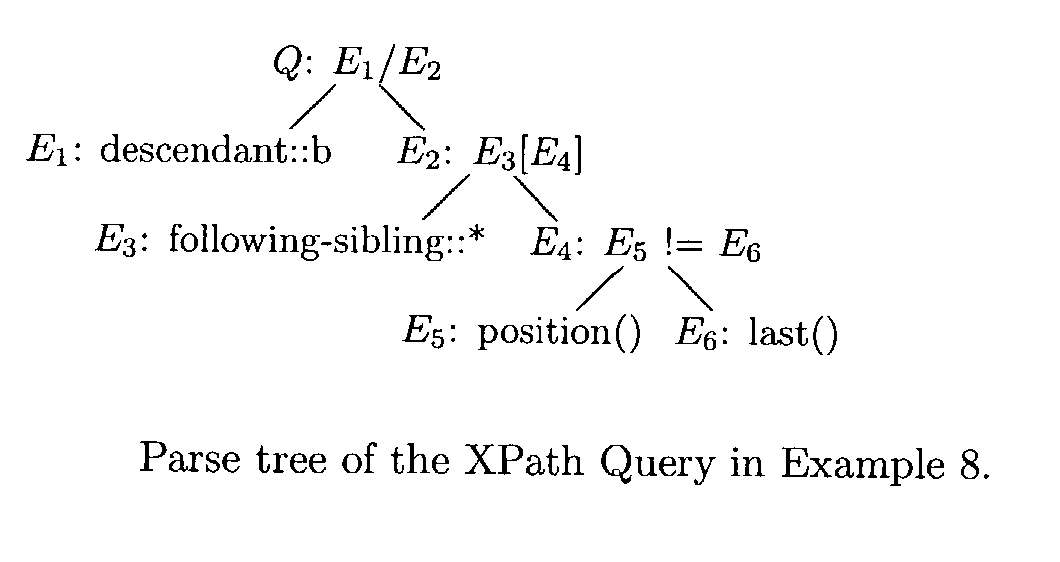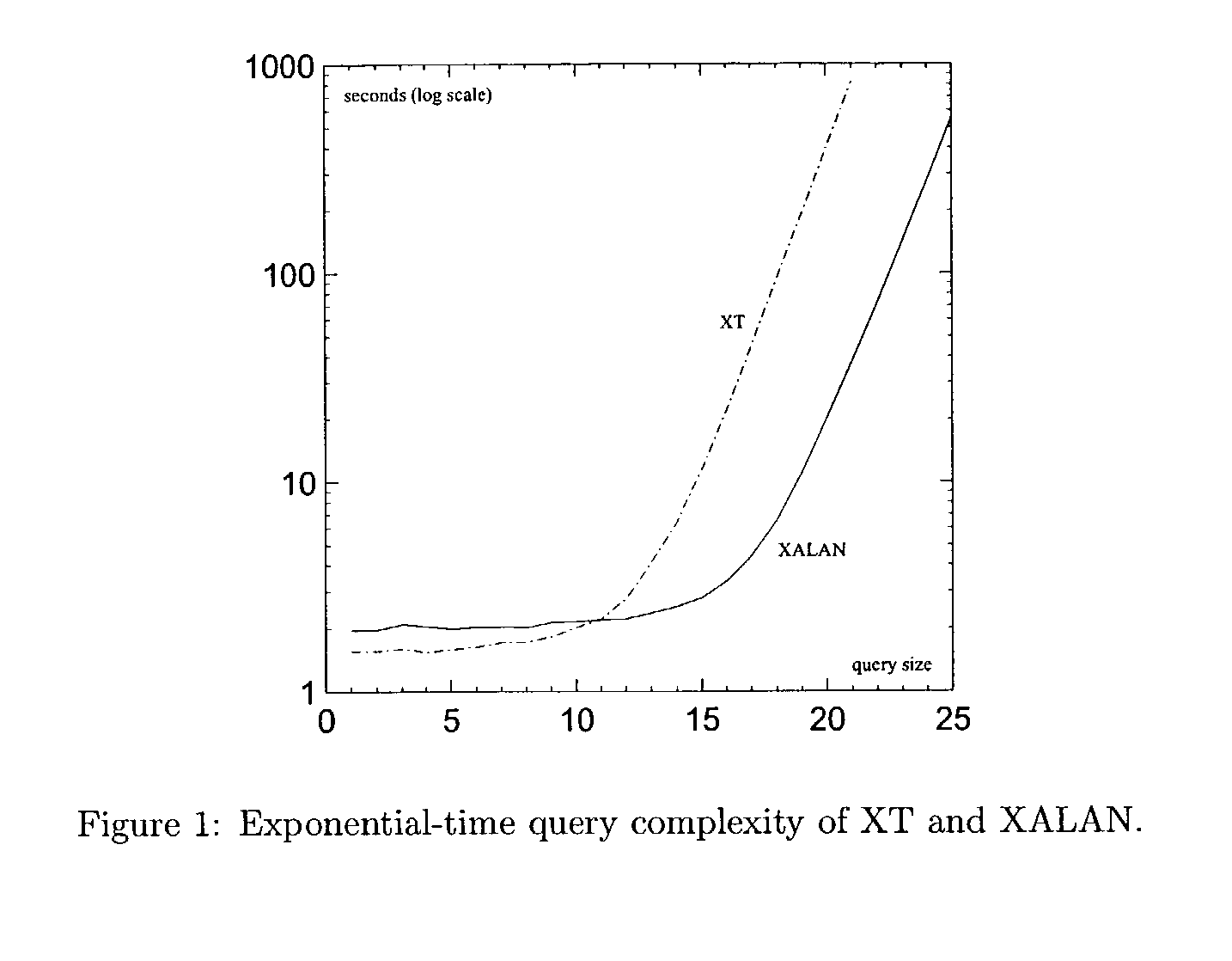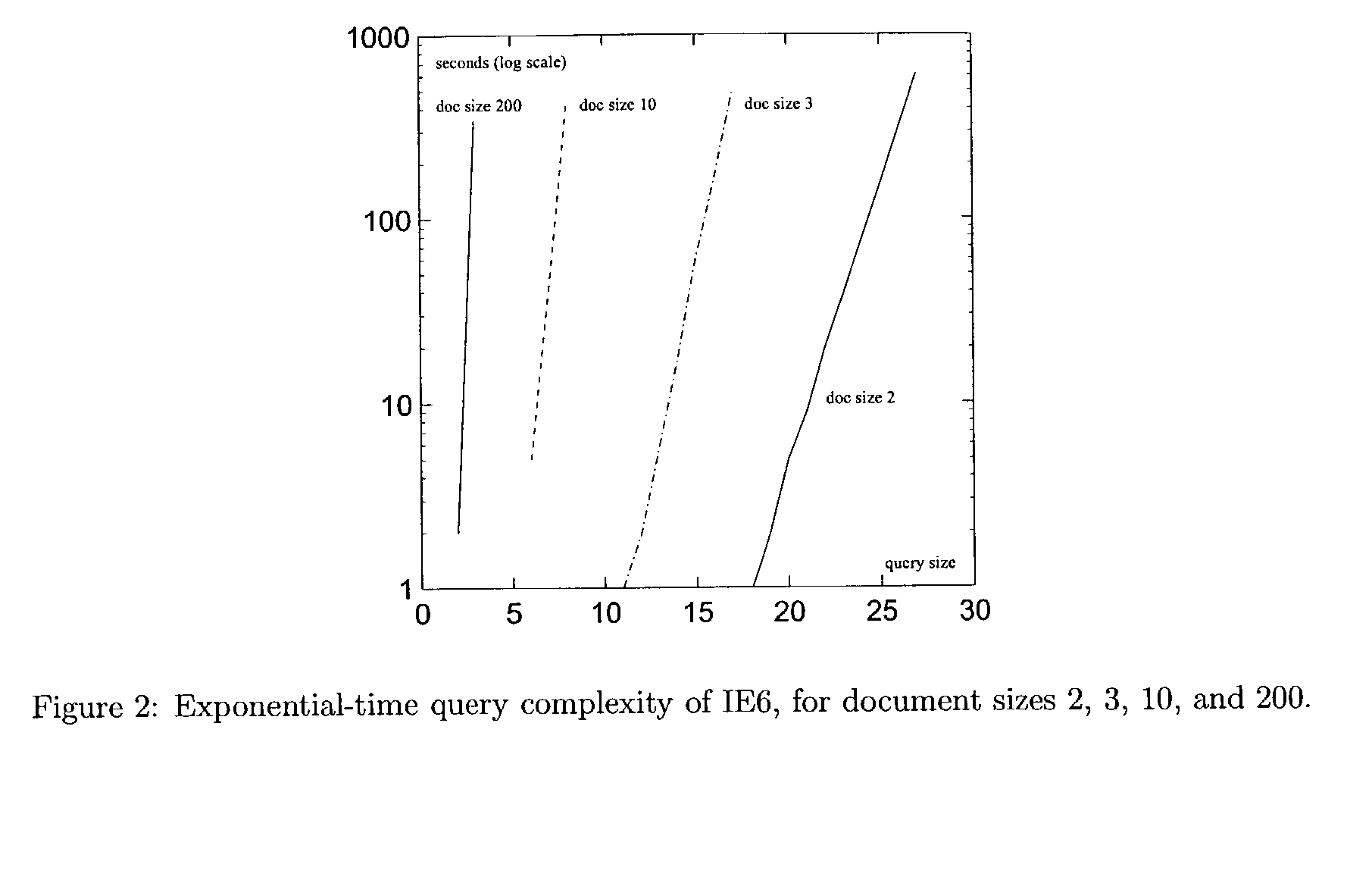Efficient processing of XPath queries
a technology of xpath query and efficient processing, applied in the field of information processing, can solve the problem of exponential size of query in the worst case, and end up consuming time exponentially
- Summary
- Abstract
- Description
- Claims
- Application Information
AI Technical Summary
Benefits of technology
Problems solved by technology
Method used
Image
Examples
example 4
[0075]Consider DOC(4) of Part I, Section B.5. It consists of six nodes—the document element node a labeled “a”, its four children b1, . . . , b4 (labeled “b”), and a root node r which is the parent of a. We have T(root( ))={r}, T(element( ))={a, b1, . . . , b4}, T(element(a))={a}, and T(element(b))={b1, . . . , b4}.
[0076]Now, XPath axes differ from the abstract, untyped axes of Section B in that there are special child axes “attribute” and “namespace” which filter out all resulting nodes that are not of type attribute or namespace, respectively. In turn, all other XPath axis functions remove nodes of these two types from their results. We can express this formally as
attribute(S):=child(S)∩T(attribute( ))
namespace(S):=child(S)∩T(namespace( ))
and for all other XPath axes χ (let χ0 be the abstract axis of the same name),
χ(S):=χ0(S)−(T(attribute( ))∪T(namespace( )).
Node tests that occur explicitly in XPath queries must not use the types “root”, “attribute”, or “namespace”. Actually, the...
embodiment 1
E.1 Embodiment 1
[0108]Bottom-up Evaluation of Xpath
[0109]In this section, we present a semantics and a method for evaluating XPath queries in polynomial time which both use a “bottom-up” intuition. We discuss the intuitions which lead to polynomial time evaluation (which we call the “context-value table principle”), and establish the correctness and complexity results.
Definition 6 (Semantics) We represent the four XPath expression types nset, num, str, and bool using relations as shown in Table 4. The bottom-up semantics of expressions is defined via a semantics function
ε↑:Expression→nset∪num∪str∪bool,
given in Table 5 and as
E↑Op(e1, . . . , em):={{right arrow over (c)}, FOp(v1, . . . , vm)|{right arrow over (c)}εC, {right arrow over (c)}, v1εE ↑e1, . . . , {right arrow over (c)}, vmεE↑em}
for the remaining kinds of XPath expressions.
[0110]Now, for each expression e and each (x, k, n)εC, there is exactly one v s.t. (x, k, n, v)εE↑e, and which happens to be the value e(x, k, n) of e on...
example 8
[0117]Consider document DOC(4) of Part I, Section B.5. Let dom={r, a, b1, . . . , b4}, where r denotes the root node, a the document element node (the child of r, labeled a) and b1, . . . , b4 denote the children of a in document order (labeled b). We want to evaluate the XPath query Q, which reads as[0118]descendant::b / following-sibling::*[position( ) !=last( )]
over the input context (a, 1, 1). We illustrate how this evaluation can be done using Procedure 7: First of all, we have to set up the parse tree of Q with its 6 proper subexpressions E1, . . . , E6 (see FIG. 4). Then we compute the context-value tables of the leaf nodes E1, E3, E5 and E6 in the parse tree, and from the latter two the table for E4. By combining E3 and E4, we obtain E2, which is in turn needed for computing Q. The tables for E1, E2, E3 and Q are shown in Table 6. Note that the k and n columns have been omitted. Full tables are obtained by computing the Cartesian product of each table with {k,n|1≦k≦n≦|dom|}.
[0...
PUM
 Login to View More
Login to View More Abstract
Description
Claims
Application Information
 Login to View More
Login to View More - R&D
- Intellectual Property
- Life Sciences
- Materials
- Tech Scout
- Unparalleled Data Quality
- Higher Quality Content
- 60% Fewer Hallucinations
Browse by: Latest US Patents, China's latest patents, Technical Efficacy Thesaurus, Application Domain, Technology Topic, Popular Technical Reports.
© 2025 PatSnap. All rights reserved.Legal|Privacy policy|Modern Slavery Act Transparency Statement|Sitemap|About US| Contact US: help@patsnap.com



